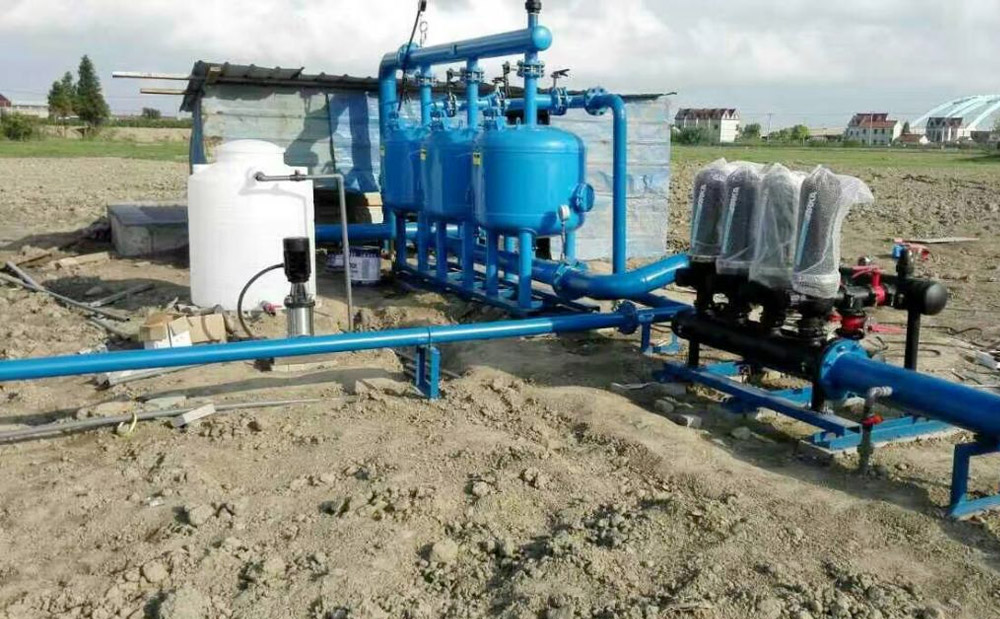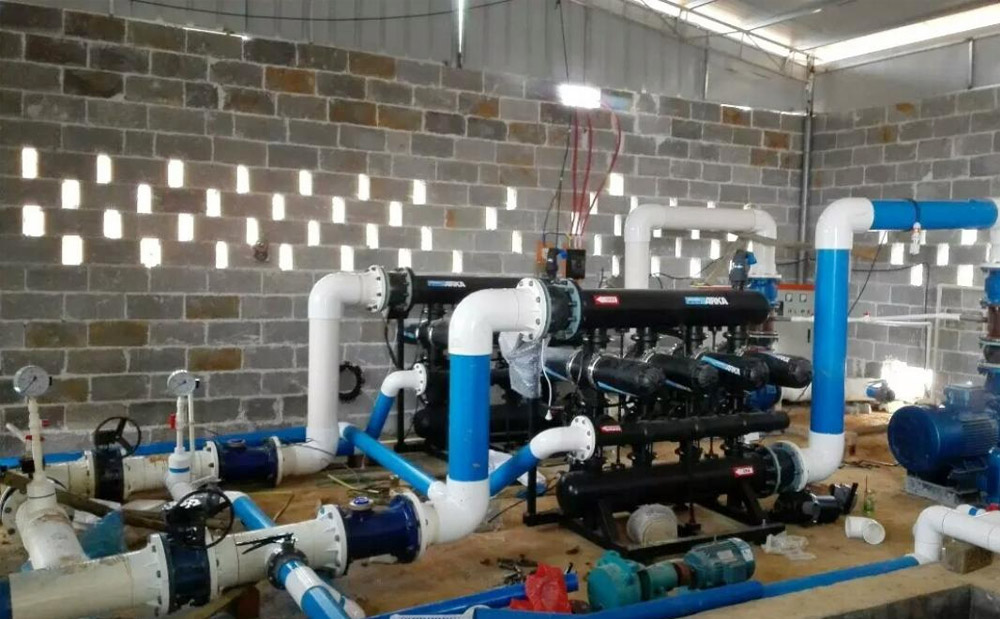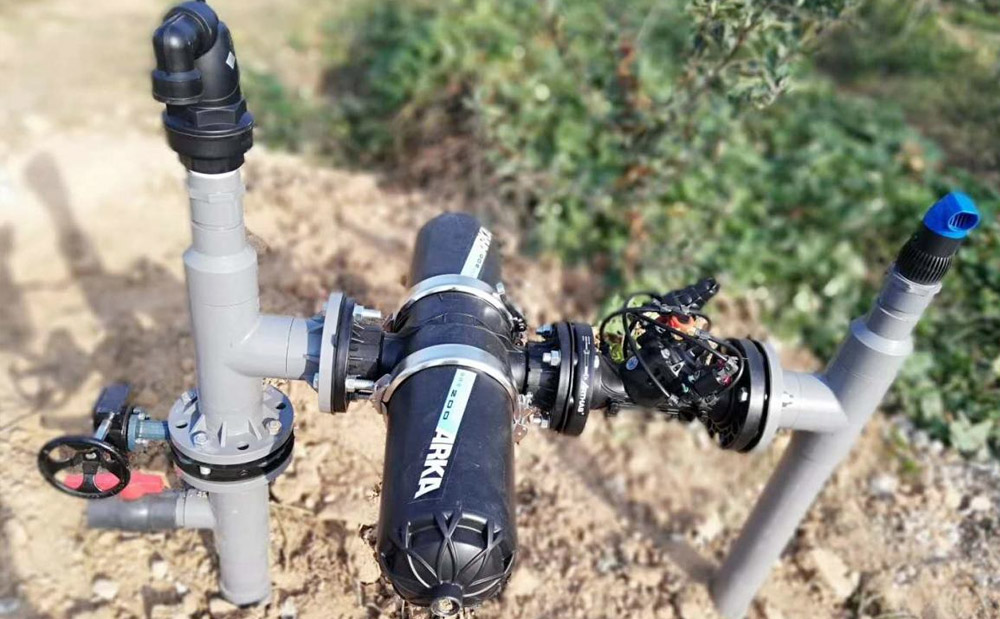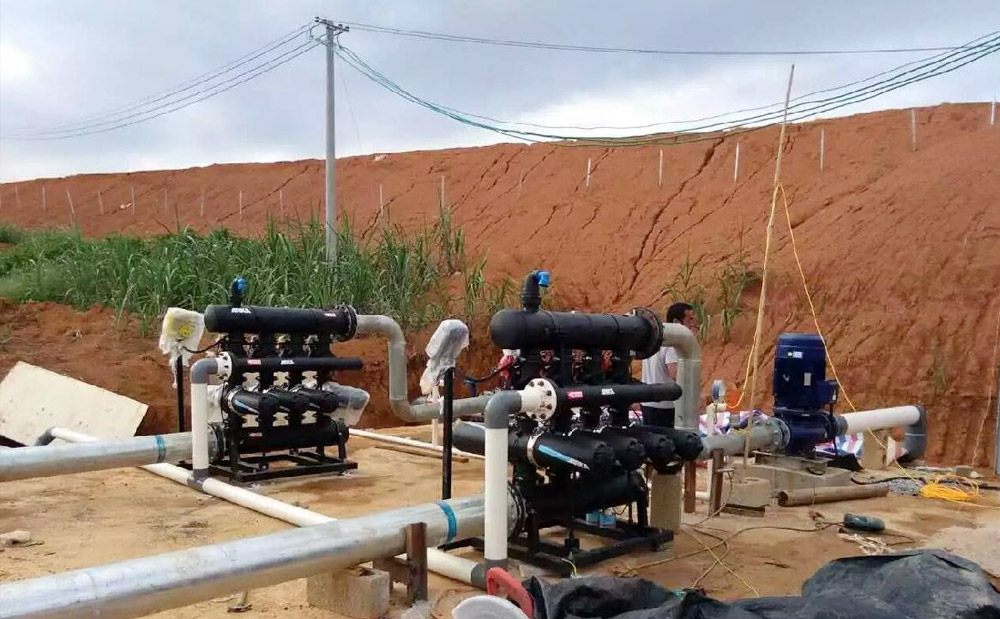The filter consists of a simplified, stainless steel strainer, a drain section, a transmission and an electrical control section. When the filter is working, the water to be filtered enters through the nozzle filter (15 sheets), flows through the filter screen, enters the pipeline required by the user through the outlet to carry out the process cycle, and the particle acrobatics in the water are trapped inside the filter screen. With such continuous circulation, more and more particles are trapped, the filtration speed is getting slower and slower, and the imported sewage is still entering continuously, and the filter holes will become smaller and smaller, thereby generating pressure between the inlet and outlet. Poor, when the large difference reaches the set value, the differential pressure transmitter transmits the electrical signal to the controller, and the control system starts the drive motor to drive the shaft to rotate through the transmission component, and the sewage outlet opens, and is discharged by the sewage outlet. After the cleaning is completed, the pressure difference is reduced to the minimum value, the system returns to the initial filtration state, and the system operates normally.
The filter is composed of a casing, a multi-element filter, a backwashing mechanism, and a differential pressure controller. The diaphragm in the housing divides the inner cavity into upper and lower chambers, and the upper chamber is provided with a plurality of filter cores, so that the filter space is fully utilized, the volume of the filter is significantly reduced, and the counter cavity is installed with a reverse Flush the suction cup. During operation, the turbid liquid enters the lower cavity of the filter through the inlet and enters the inner cavity of the filter element through the partition hole. Impurities larger than the gap of the filter core are trapped, the clean liquid passes through the slit to the upper chamber, and finally is sent out from the outlet.
The filter uses a high-strength wedge filter to automatically clean the filter element by differential pressure control and timing control. When the impurities in the filter accumulate on the surface of the filter element and the differential pressure between the inlet and outlet increases to a set value, or the timer reaches a preset time, the electric control box sends a signal to drive the backwashing mechanism. When the backwashing suction port is directly opposite to the filter inlet, the drain valve is opened. At this time, the system is drained, and a negative pressure zone is formed on the inside of the suction cup and the filter core, which is lower than the water pressure outside the filter, forcing part of the circulating water from the outside of the filter. The inside of the filter element flows into the inside of the filter element, and the foreign particles adsorbed on the inner wall of the filter element flow into the tray with water and are discharged from the drain valve. The specially designed filter screen creates a jetting effect inside the filter element and any impurities will be washed away from the smooth inner wall. When the pressure difference between the inlet and outlet of the filter returns to normal or the timer setting time is over, the material continues to flow during the whole process, and the backwash consumes less water, realizing continuous and automated production.
Filters are widely used in metallurgy, chemical, petroleum, paper, medicine, food, mining, electric power, urban water supply. Such as industrial wastewater, filtration of circulating water, regeneration of emulsion, filtration of waste oil, continuous casting water system in metallurgical industry, blast furnace water system, high pressure water descaling system for hot rolling. It is an advanced, efficient and easy to operate fully automatic filter unit.

